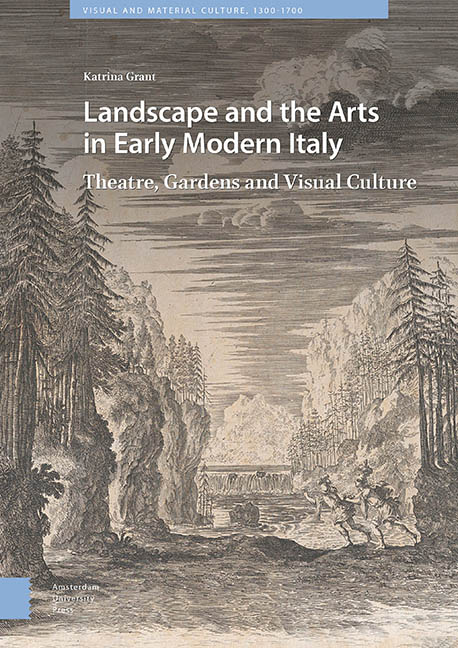Book contents
- Frontmatter
- Contents
- Acknowledgements
- Introduction
- 1 Theatricality, a View from the Landscape
- 2 Gardens of the Gods : Classical Revival, Intermedi, Early Opera and the Idea of Nature
- 3 The (Singing) Figure in the Landscape
- 4 Triumph over Nature : Machines and Meraviglia on the Seventeenthcentury Stage
- 5 The Theatre in the Landscape : Pliny to Pratolino
- 6 The Garden as Stage, the Visitor as Performer
- 7 Stages without Actors : Theatres of Sculpture, Water and Flowers
- 8 Performing in the Parrhasian Grove : Green Theatres and the Academies
- Bibliography
- Index
7 - Stages without Actors : Theatres of Sculpture, Water and Flowers
Published online by Cambridge University Press: 15 September 2022
- Frontmatter
- Contents
- Acknowledgements
- Introduction
- 1 Theatricality, a View from the Landscape
- 2 Gardens of the Gods : Classical Revival, Intermedi, Early Opera and the Idea of Nature
- 3 The (Singing) Figure in the Landscape
- 4 Triumph over Nature : Machines and Meraviglia on the Seventeenthcentury Stage
- 5 The Theatre in the Landscape : Pliny to Pratolino
- 6 The Garden as Stage, the Visitor as Performer
- 7 Stages without Actors : Theatres of Sculpture, Water and Flowers
- 8 Performing in the Parrhasian Grove : Green Theatres and the Academies
- Bibliography
- Index
Summary
Abstract
This chapter examines the idea of stages without actors and the rise of landscape designs that presented nature as a spectacle. It looks not only at the rise of design features like water theatres and sculpture theatres, but links these to themes explored above in relation to sets. Seventeenth-century designers and engineers rapidly developed a range of new techniques for controlling wild nature in the garden, it was mimicked, shaped and manipulated. These features were, more often than not, framed as spectacles and the garden became a stage for the performance of a new type of relationship between humans and the natural world.
Keywords: Gardens, Landscapes, Garden Design, Hydraulic engineering, Theatre
Many garden theatres were not used for conventional performance but were conceived of as stages for the display of nature. Three key ideas seem to guide the construction of a diverse array of garden features from the early 1600s. The first is the preoccupation with machines and the use of new engineering skills to replicate, and even surpass, the effects of nature itself. The second is the idea of the theatre as compendia and display, the theatrum mundi set to work on large and small scales. The third is the idea that nature itself, its movement, growth and sensory experiences could be presented as performances for the pleasure of spectators.
Engineering Water and Spectacle in the Teatri d’Acqua of Frascati
In May 1645 the English traveller John Evelyn visited the Villa Aldobrandini and stated that he found it to be ‘surpassing, in my opinion, the most delicious places I ever beheld’. Much of his description focuses on the grand water theatre built behind the villa:
Under this [theatre] is made an artificial Grott, where in are curious rocks, hydraulic organs & all sorts of singing birds moving, & chirping by force of the water, with severall other pageants and surprizing inventions: In the center of one of these roomes rises a coper ball that continualy daunces about 3 foote above the pavement, by virtue of a Wind conveyed seacretly to a hole beneath it, with many other devices to wett the unwary spectators, so as one can hardly step without wetting to the skin:
- Type
- Chapter
- Information
- Landscape and the Arts in Early Modern ItalyTheatre, Gardens and Visual Culture, pp. 201 - 232Publisher: Amsterdam University PressPrint publication year: 2022



